Adding a red dot to a shotgun can seem counterintuitive at first—after all, they’re scatterguns. Many people would tell you that you barely even need a bead sight, much less an electronic one.
But as any seasoned hunter or competitive shooter will tell you, precision matters, even with a shotgun. Red dots for shotguns offer many of the same benefits as they do for rifles, including faster and more precise fire compared to traditional iron sights and improved visibility in adverse conditions.
Unlike rifles, though, shotguns present some unique challenges when it comes to adding a modern optic, the most significant of which is the fact that most shotguns can fire both shotgun shells and slugs. Those two loads have radically different patterns and trajectories, which can make finding one single zero a challenge. So, let’s dive into our recommendations for the best red dot sights to add to your shotty.
The 4 Best Red Dot Sights for Shotguns
For many users, the benefits of a red dot substantially outweigh any detriments, but that can still leave the issue of selecting the right dot. The red dot market is saturated with options, ranging from cost-effective units to feature-rich, ruggedized premium sights.
Because of this plethora of options, there’s no one best red dot for a shotgun; there are many, each slightly specialized and offering its own advantages. Which red dot is best for your shotgun will depend on which of those advantages will be most useful to you.
While this list is far from comprehensive, we’ve gathered a few options for top-tier shotgun red dot sights.
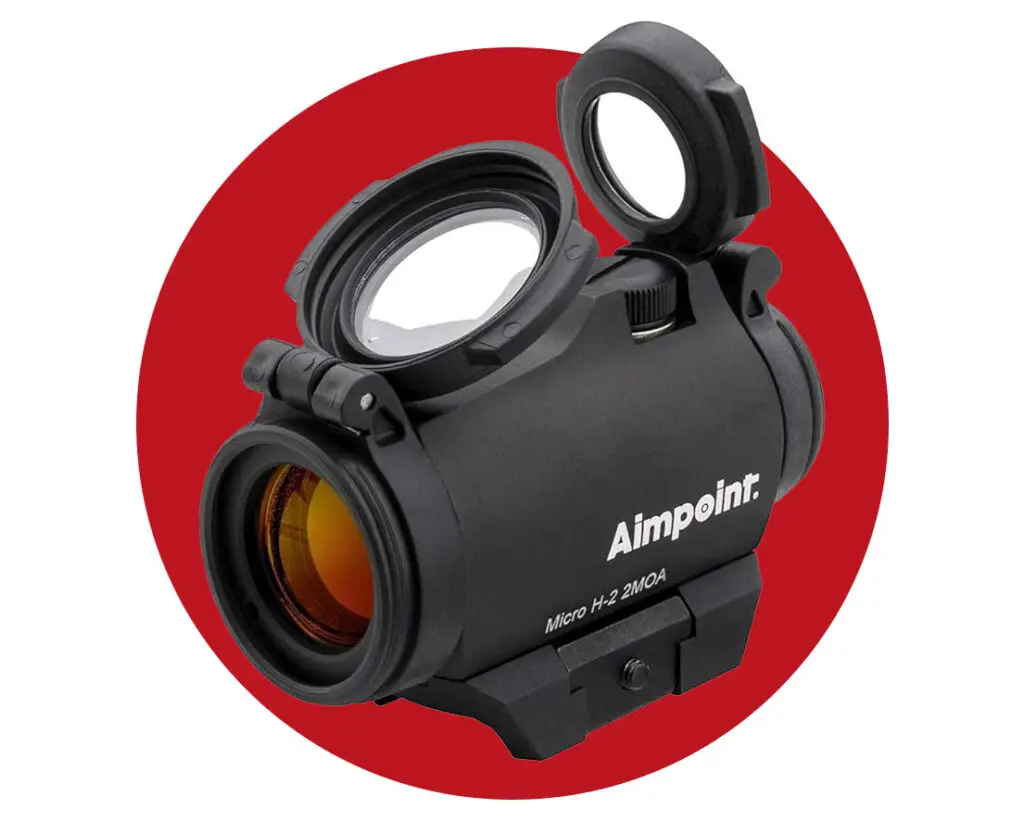
Aimpoint H-2
Check price at:
One of the quintessential micro red dot sights, Aimpoint’s H2 (or T2, if you want night vision compatibility) offers a simple, no-frills option that won’t add undue weight or bulk to your shotgun. It’s widely lauded for its remarkable durability and offers a powerfully bright dot with 12 different brightness settings.
Its enclosed design makes it highly resilient to water or mud, making it a great choice for hunting shotguns, and it’s available with some very low-profile mounts to help minimize any height-over-bore issues.
Being a premium optic from one of the biggest names in the red dot business, it’s not a cheap option, but it is one that you can trust will last as long as your shotgun. For the cost-conscious, though, there are several similar optics inspired by the popularity of the H2, many of which are even compatible with the same mounts and accessories.
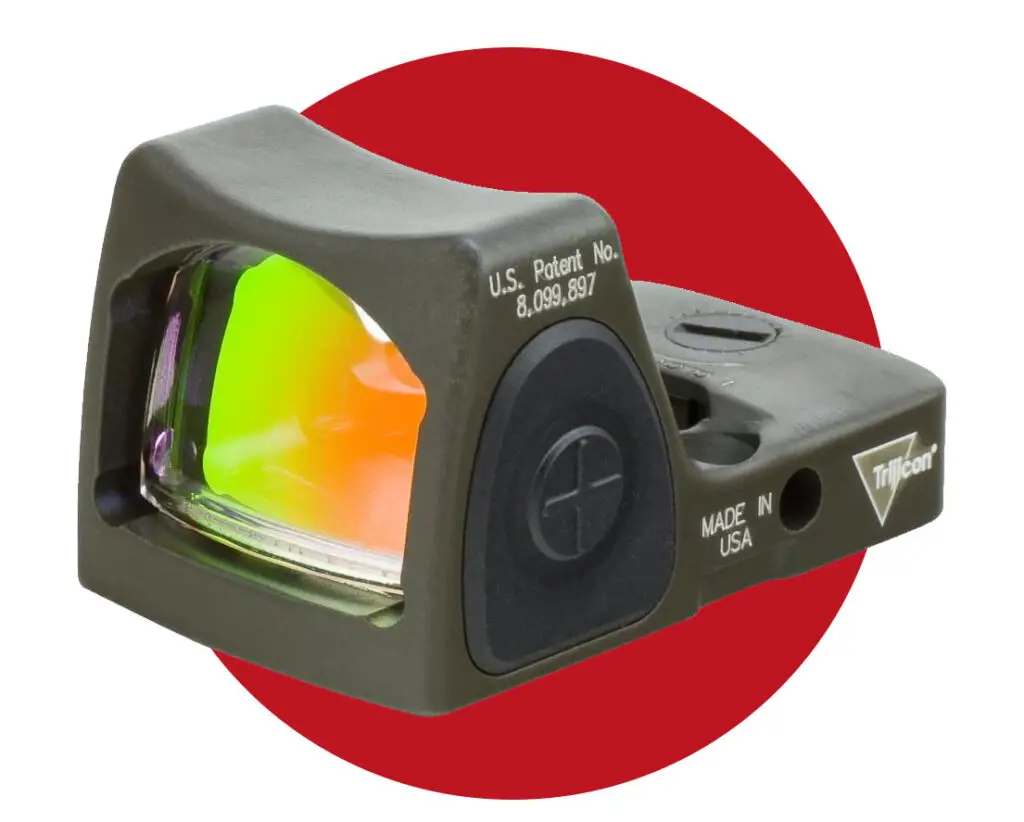
Trijicon RMR
Check price at:
Those looking for the smallest, lightest dot possible need look no further than the Trijicon RMR. This tiny red dot can provide illuminated, target-focused aiming with only a few ounces added to your firearm, and in some cases, can even be made to cowitness with existing iron sights, offering users a backup option in the event of a dead battery.
However, the open emitter design is more sensitive to mud and debris than something like the Aimpoint H2, making it possible for the emitter lens to become obstructed. It won’t permanently disable the sight—clearing the lenses is typically as simple as wiping it with a Q-tip—but that may be little solace if it causes you to miss a crucial shot.
Read our full Trijicon RMR review here.
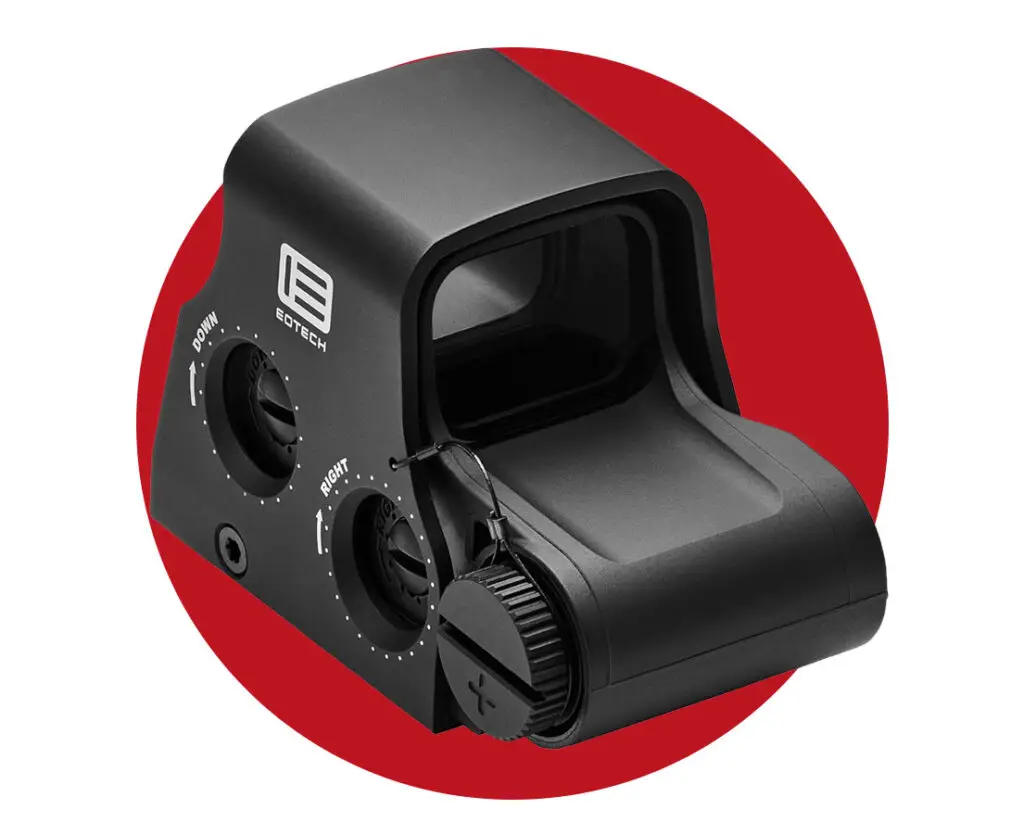
EOTech XPS2
Check price at:
The polar opposite of the RMR, EOTech’s XPS2 is a full-size red dot with a massive lens and a size and weight to match. That huge window makes it fast and easy to acquire the dot, offering more margin for error than an RMR or even the H2. But, the size of the optic also means that height-over-bore will be more pronounced than with either of the aforementioned sights.
Unlike our other two recommendations, the XPS2 is not technically a red dot, but a holographic sight. It’s a small difference, but a significant one. It won’t have the prodigious run time of an H2 or RMR, but the unique method of projecting the dot can alleviate or eliminate blurring from astigmatism.
The XPS2 also offers a more complex reticle than the simple dot or triangle available from the H2 and RMR. Its signature dot-and-circle reticle blends speed and precision, allowing shooters to use the larger outer ring for fast short-range shots or the tiny 1 MOA center dot for precise work.
This is especially valuable for a shotgun, as users can pattern their firearm to determine at what distance their spread matches the XPS2’s outer ring and use the ring as the primary method of aiming out to that distance while keeping the center dot zeroed for slugs.
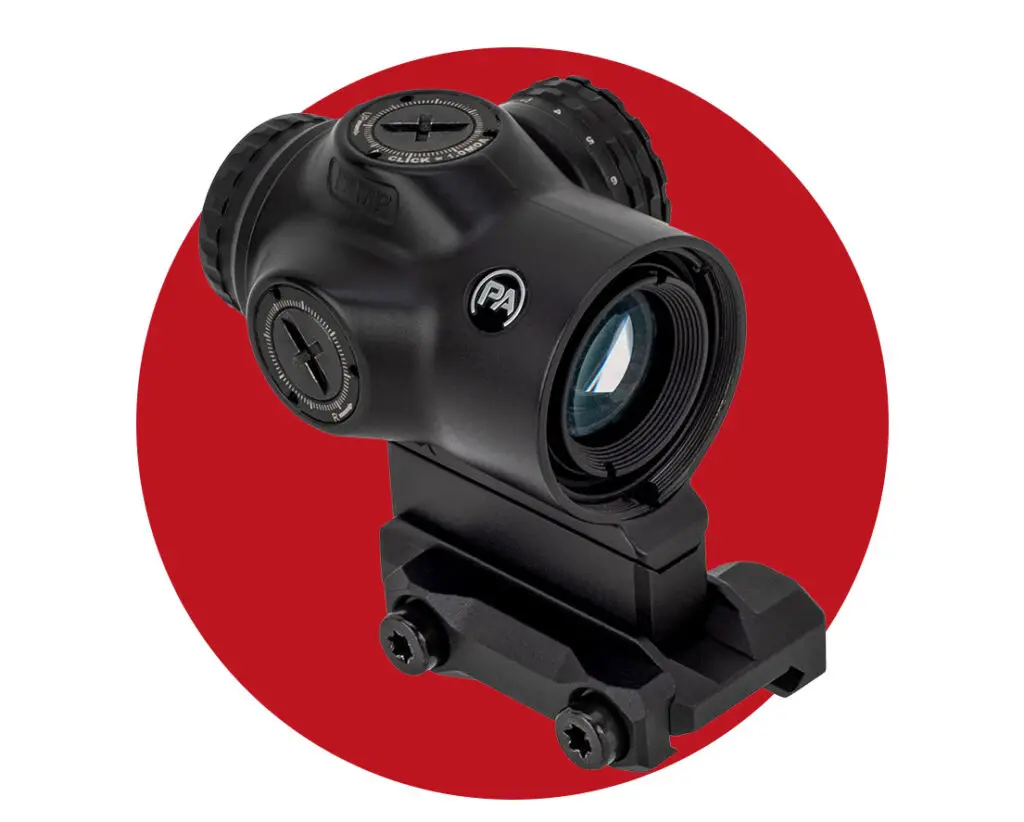
Primary Arms 1x MicroPrism™
Check price at:
While not technically a red dot, Primary Arms’ 1x MicroPrisms function in much the same way. Unlike earlier prisms sights, these tiny optics deliver such a generous eye relief that there is little difference between them and red dots, despite not technically being parallax-free the way actual red dots are.
Because the 1x MicroPrism utilizes an etched reticle, most users with astigmatism experience little or no blurring. The etched reticle also ensures that you still have a way to aim in the event of a dead battery, negating one of the primary drawbacks of red dots.
Like the EOTech, the 1x Microprism offers a more complex reticle than just a simple dot. It uses a chevron and horseshoe design, which, as with the XPS2, allows shooters to use the ring for shot and the center aiming point for slugs. The chevron has an additional bonus over a center dot, though, in that the tip can be zeroed for slugs at one range, and the bottom of the chevron can be used as a holdover mark for longer-distance shots.
Should I mount a Red Dot on my shotgun?
Below, we’ll take a look at some of the pros and cons of shotgun red dots, as well as the best practices for zeroing them.
The Pros
The speed and simplicity of a red dot are hard to overstate. A bright, polished brass bead can be very fast to acquire, but it’s never going to be able to match the brilliance of a battery-powered optic. That extreme level of brightness allows a red dot to draw the eye faster, even in broad daylight. At night or in other low-light situations, there’s simply no contest between an illuminated dot and iron sights.
Most modern red dots are parallax-free, as well, meaning that you don’t necessarily have to have your head perfectly centered behind the sight to gain an effective sight picture. This flexibility is particularly valuable when shooting at a suddenly-emerged target like a game bird or on the move during a competition.
Perhaps the largest benefit of a shotgun red dot is the target-focused nature of its design. Most traditional iron sights require the user to focus on the front sight for optimum precision, but red dots do not—they are best used by looking through the dot rather than at it, allowing the user to focus on the target.
Combined with the aforementioned two attributes, red dots offer a rapid, precise method of aiming that lets the user engage a target without ever taking their focus off of it, in a wide range of environments.

The Cons
Of course, red dots aren’t a perfect solution for every user—nothing ever is. Red dots come with their fair share of drawbacks.
The most obvious of these is cost. While the price of a quality red dot has been steadily falling over the past few years, it can still cost as much or more than the shotgun itself. While the performance benefits are undeniable, not all users need that increased capability, offering a compelling reason to save the money that would be spent on a red dot for another case of shells.
Red dots are also battery-dependent. A brass bead can lose its luster, but you’ll never shoulder your shotgun to find it invisible. With a red dot, though, a disappeared reticle is a distinct possibility, if you allow too much time to pass between battery changes. Like so many potential issues, though, this can be minimized with regular maintenance.
While not all users will experience this, some may find red dots blurry or smudged. This is usually due to an eye condition called astigmatism, which is quite common. Users with astigmatism will need corrective glasses or contact lenses to resolve that blurriness or irregularity, creating another drawback, albeit only for those with astigmatism.
Lastly, red dots can introduce some complexity into very short-range shots—such as those you may encounter if you ever have to use a shotgun defensively. Both bead sights and ghost ring irons are mounted quite close to the barrel of the shotgun, but red dots tend to stand somewhat taller. This can create issues with height over bore.
Your red dot, if properly installed, should be zeroed at a specific distance. Inside that distance, though, your shot or slug will land lower than your point of aim, with the amount of offset increasing as the target gets closer. At extremely close ranges, your point of impact can be up to several inches low, depending on how high your optic is mounted over your bore.
While a few inches may not seem like much, it can be enough to make a difference in a hunting or self-defense scenario. Similar to the battery-dependency issue, though, this drawback can be minimized with training and by familiarizing yourself with your shotgun’s pattern and point of impact at all ranges, rather than just the one it is zeroed at.
Zeroing Your Shotgun Red Dot
Zeroing a red dot on a shotgun can be a tricky affair, particularly if you use your firearm for both slugs and shotshells. In this case, it’s usually best to zero your shotgun as you would a rifle using slugs, then do your best to learn the pattern of your shot relative to the dot. The exact distance at which to zero will depend heavily on the firearm and user, but 75 yards is a common choice for shotgun slugs.
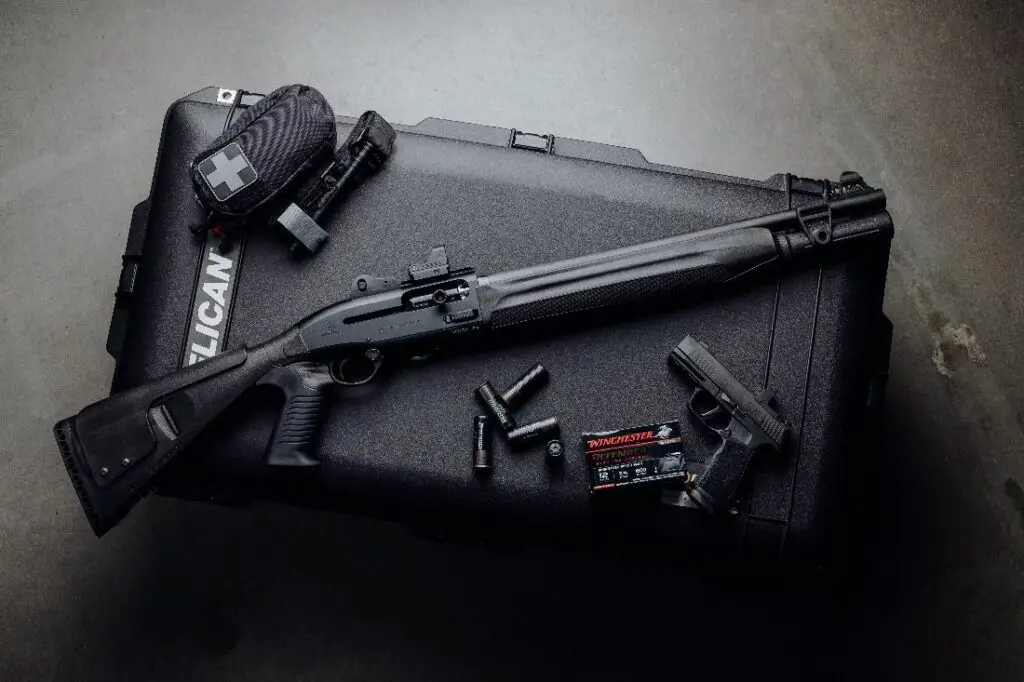
If you only plan on using shot, though, the process gets somewhat simpler.
You’ll want to start by patterning your shotgun and determining which load you’ll be using most frequently. If, like many shooters, you use one load for hunting and another cheaper one for practice, we recommend zeroing your dot based on the hunting load.
Your ideal zero distance will vary depending on your use case. For a defensive shotgun, your zero distance should usually be quite close. Many Americans who depend on their shotgun for home defense choose to measure the longest distance in their home, then zero their shotgun for that distance. This ensures that their point of impact will be at or near their point of aim at any distance within their home.
A more common zero distance for hunting or general-purpose shotguns is around 25 yards. This number is more of a guideline than a rule and can be affected by your shotgun’s pattern. For a hunting shotgun with a tight choke and low amount of spread, a 30 or even 40-yard zero may allow for greater precision at range.
Conclusion
Whether you shoot slugs, shot, or both, adding a red dot to your shotgun can speed up your shots and improve your precision. It comes with an increase in maintenance and a little more required training, but the benefit to performance across multiple disciplines and in nearly all scenarios is often more than worth it.
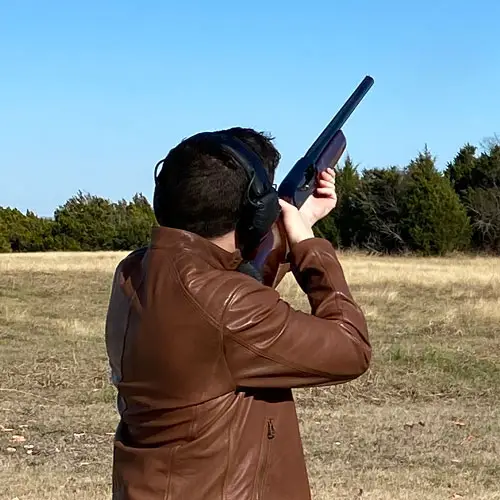
Joseph has been hunting for most of his life. Some of his best memories were growing up sitting in a treestand or a blind and waiting for a monster buck to come along. His main focus has been deer hunting, typically with my trusty 20 gauge shotgun.
